Canada is renowned for its breathtaking natural beauty, with iconic destinations like Banff, Niagara Falls, and Whistler featured on countless postcards and travel itineraries. But beyond these famous highlights lies another world — one filled with hidden gems and quiet wonders often overlooked by travelers.
These lesser-known spots offer a deeper, more personal connection to the land. From remote Arctic fjords and sun-drenched sand dunes to ancient impact craters and moonlit coastlines, Canada is home to countless landscapes waiting to be explored.
This list of 21 natural wonders highlights the beautiful yet often ignored corners of the country. Whether you’re an experienced adventurer or simply seeking peaceful solitude, these sites offer a rare and unforgettable side of Canada.
Haida Gwaii, British Columbia
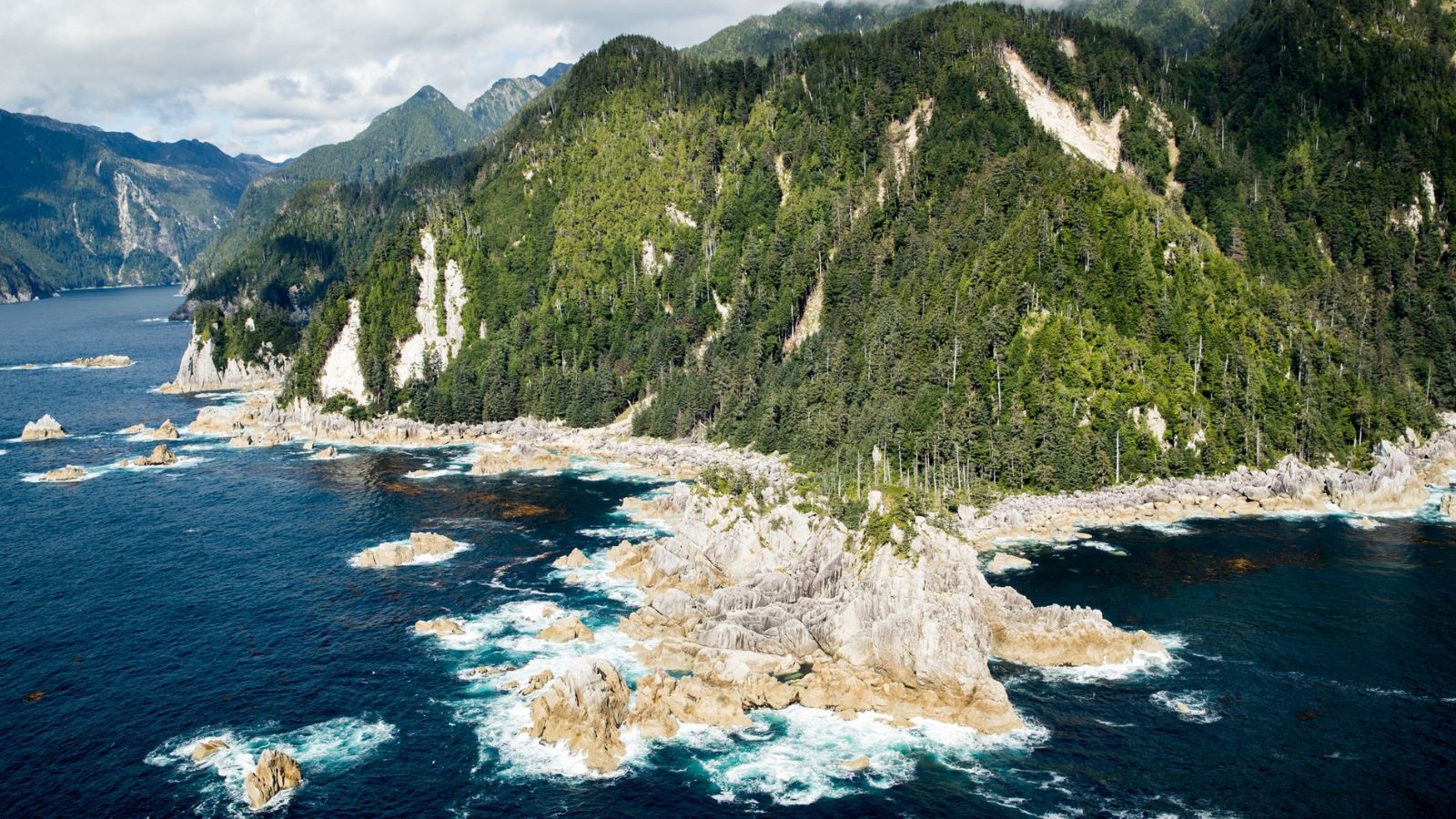
Haida Gwaii is a remote archipelago off the northern coast of British Columbia, rich in Indigenous culture and ecological diversity. Often called the “Galápagos of the North,” these islands are home to ancient rainforests, dramatic coastlines, and rare wildlife found nowhere else in Canada.
Although Haida Gwaii has gained more recognition in recent years, it still sees far fewer visitors than other Canadian destinations. Those who do venture there are rewarded with pristine landscapes and a peaceful escape, far removed from the typical tourist trails.
Red Rock Coulee, Alberta
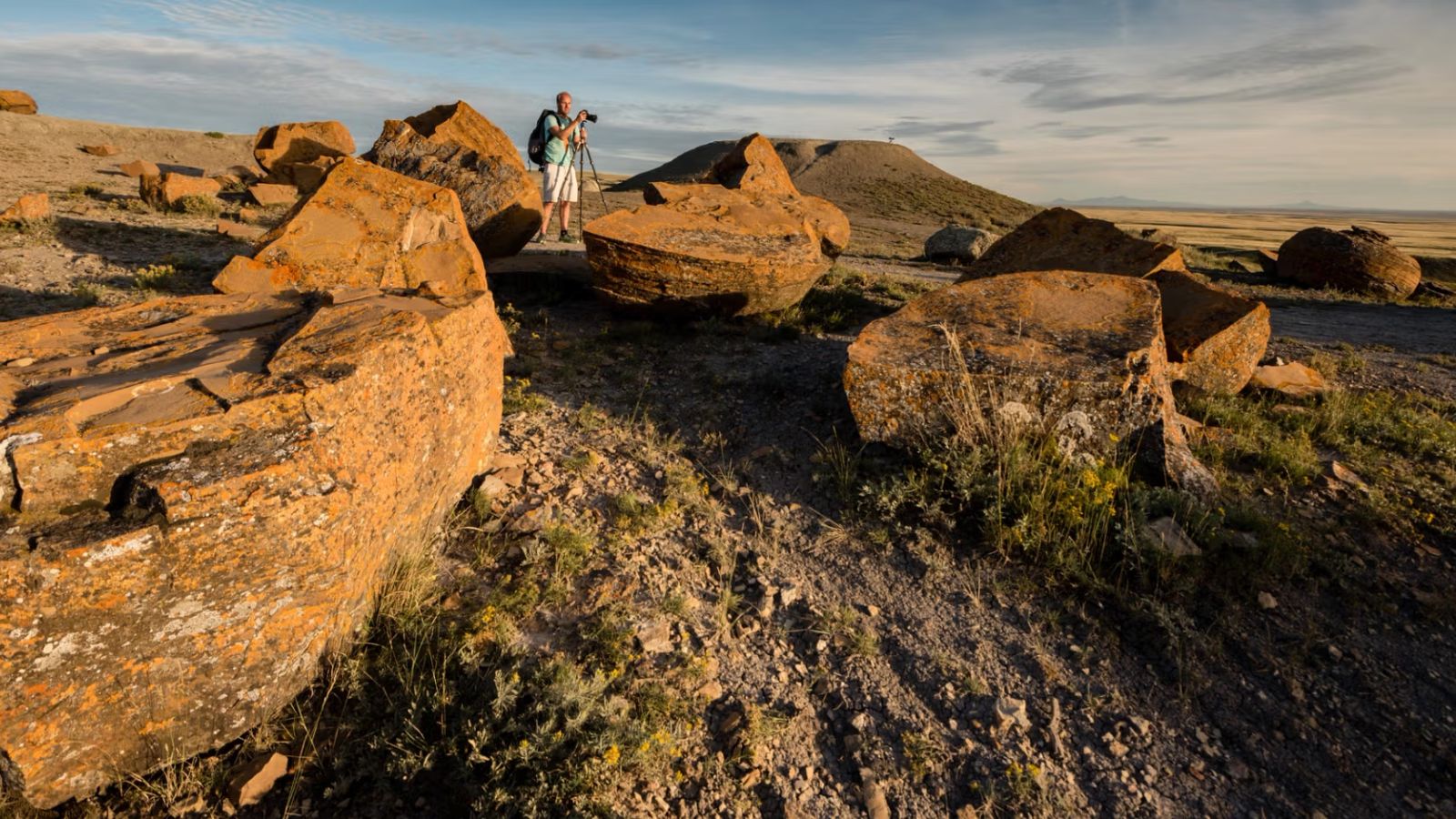
Hidden in southeastern Alberta, Red Rock Coulee offers an otherworldly landscape with enormous, spherical boulders scattered across a burnt-orange terrain. These sandstone formations are perfectly rounded and serve as remnants of prehistoric geological processes.
This site is not well known and is typically ignored by people en route to more famous parks. But this place at sunset creates an environment that feels closer to Mars than the Canadian Prairies. Red Rock Coulee remains one of Alberta’s best-kept secrets and an unexpected gem despite its accessibility by car.
Nahanni National Park Reserve, Northwest Territories
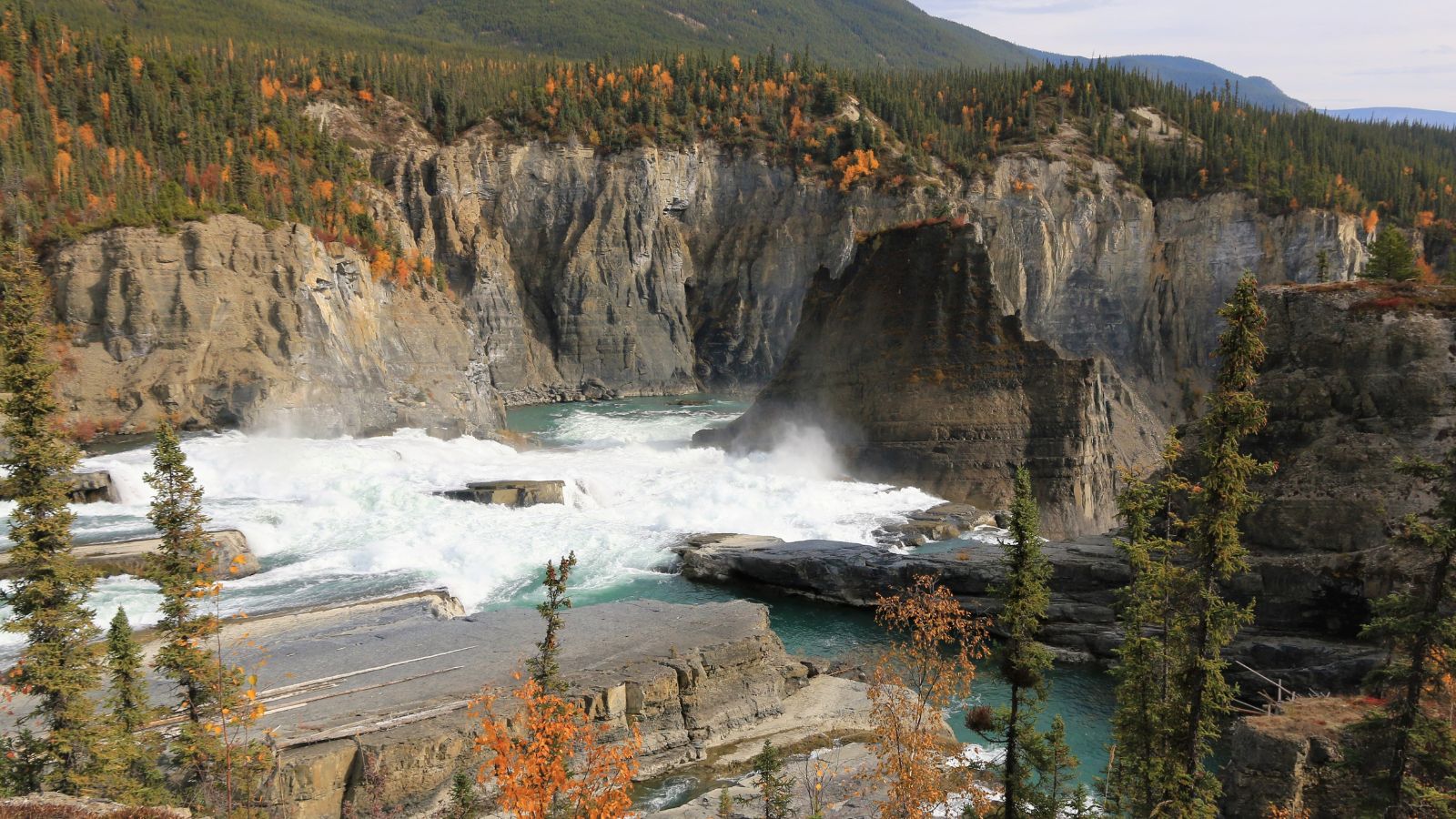
Many Canadians know of this UNESCO World Heritage Site, but few have ever visited it. Tucked into the Mackenzie Mountains, Nahanni is accessible only by air or through challenging overland routes. The park is home to the mighty Virginia Falls, dramatic canyons, alpine plateaus, and natural hot springs, creating a breathtaking mosaic of ecosystems.
Reaching it isn’t easy, which keeps most tourists away. However, those who do make the trek are rewarded with an unparalleled sense of awe at the vast, wild beauty of Canada’s untamed north.
Mingan Archipelago, Quebec
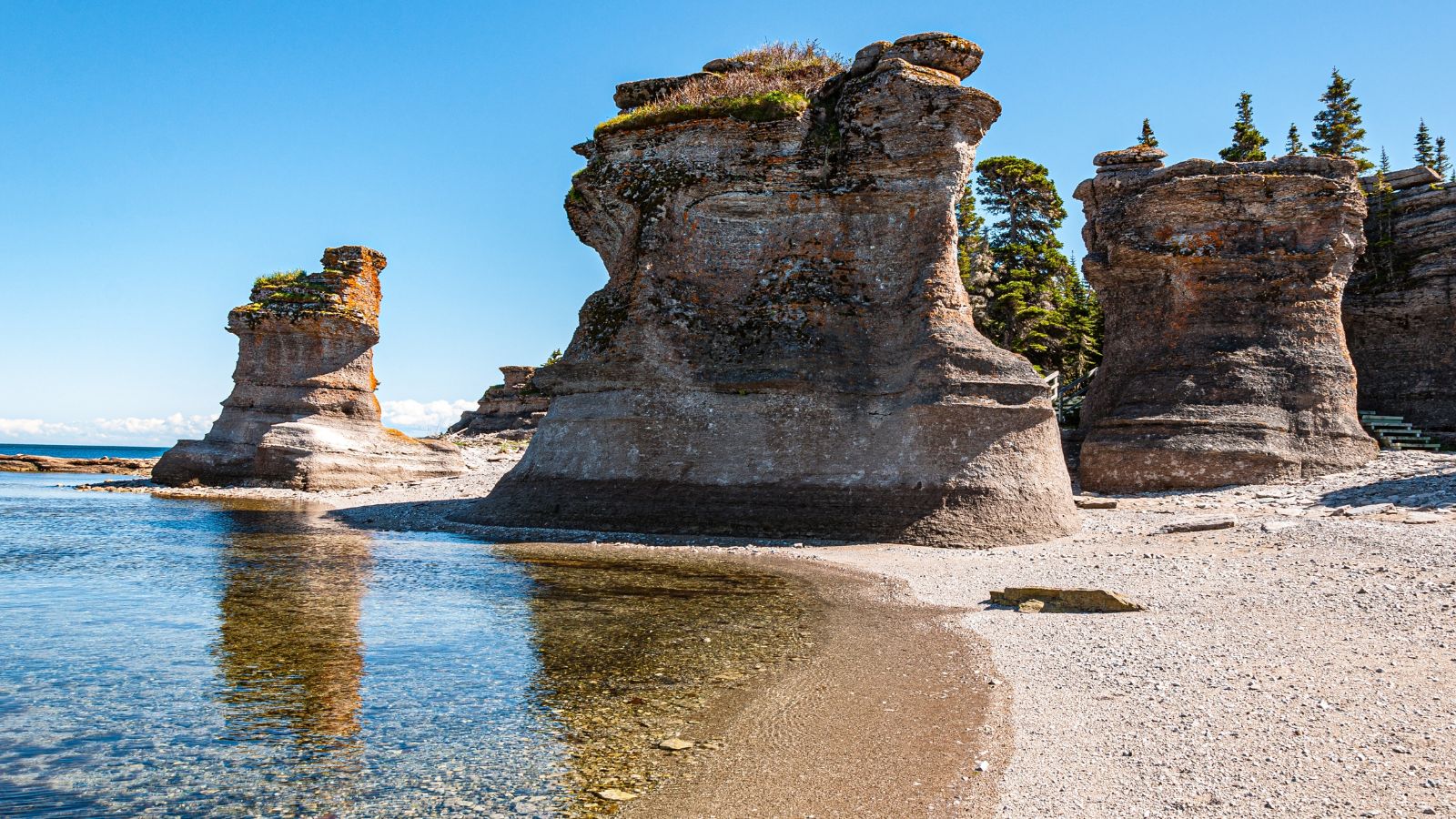
Stretching along the Gulf of St. Lawrence, the Mingan Archipelago is a chain of limestone islands carved by sea and wind into looming monoliths and bizarre formations. These natural sculptures seem like the work of abstract artists. The pillars, arches, and silhouettes look almost mythical.
Mingan is left unexplored as visitors to Quebec gravitate toward the cities or national parks. Accessible by boat from Havre-Saint-Pierre, the islands are excellent for hiking, kayaking, and camping. Mingan Archipelago’s geological uniqueness makes it one of Canada’s most underrated coastal marvels.
Spirit Island, Alberta
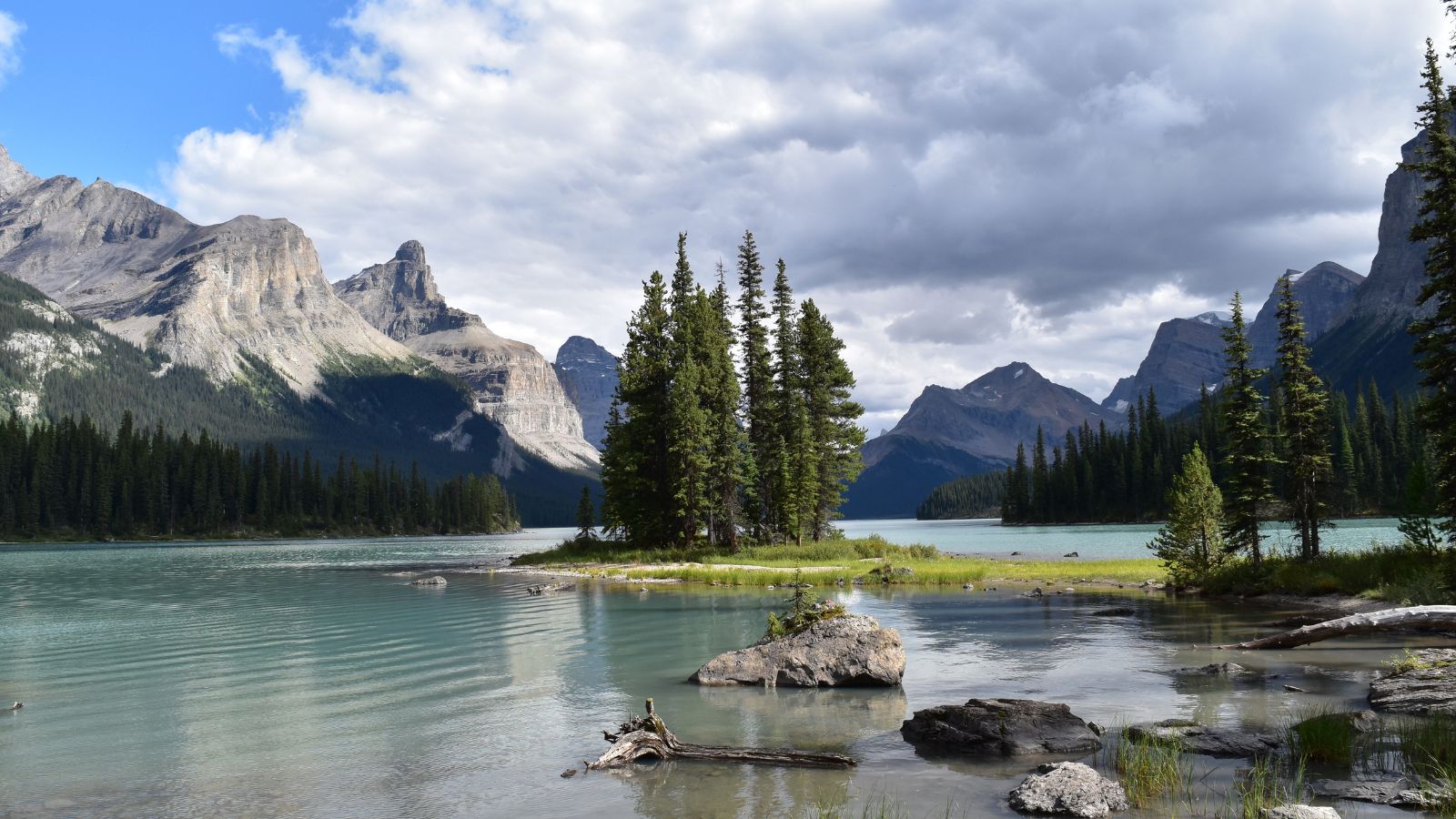
Perched in Maligne Lake’s turquoise waters in Jasper National Park, Spirit Island is one of the most photographed but least personally experienced spots in the Rockies. It’s popular, but visiting the island requires a boat trip across the 22-kilometre-long lake, which deters casual tourists.
The surrounding scenery is spectacular, with glacial peaks reflected in the calm lake amidst thick alpine forests. Very few take the time to experience this beauty up close, and instead, thousands view it through postcards and calendars. People who visit are likely to feel like they have stepped into a painting that has been brought to life.
Manicouagan Reservoir, Quebec
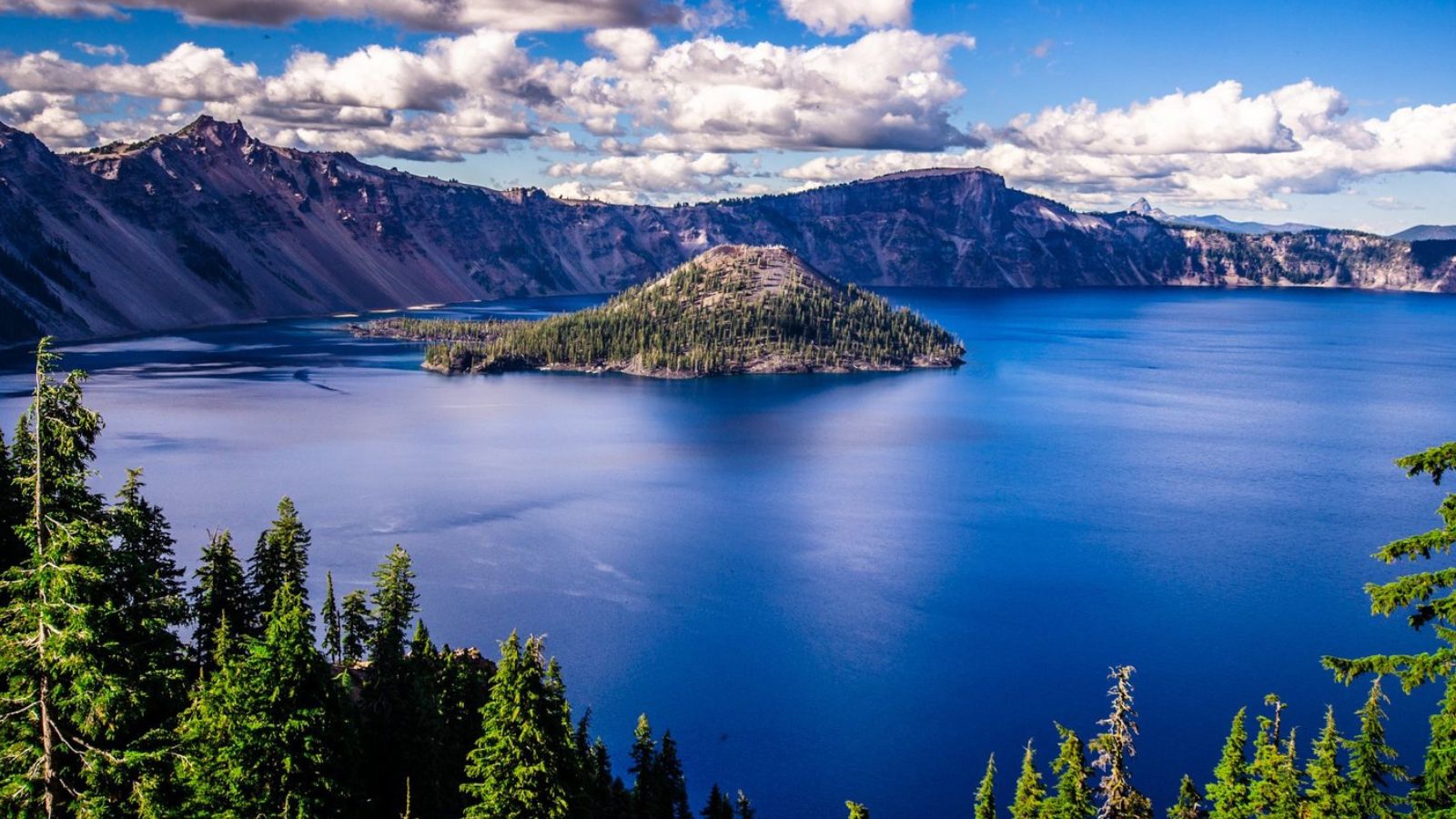
Thanks to its near-perfect circular shape, the Manicouagan Reservoir is visible from space and is actually the site of an ancient meteorite impact. It is now filled with water and surrounded by rugged terrain. Located in central Quebec, it’s relatively unknown outside scientific circles.
One of the largest lake islands in the world, René-Levasseur Island, is surrounded by this reservoir. Despite its size and significance, it does not receive many visitors. Irrespective of this, its wild atmosphere makes it a perfect destination for those interested in solitude, geology, and celestial history.
Athabasca Sand Dunes, Saskatchewan
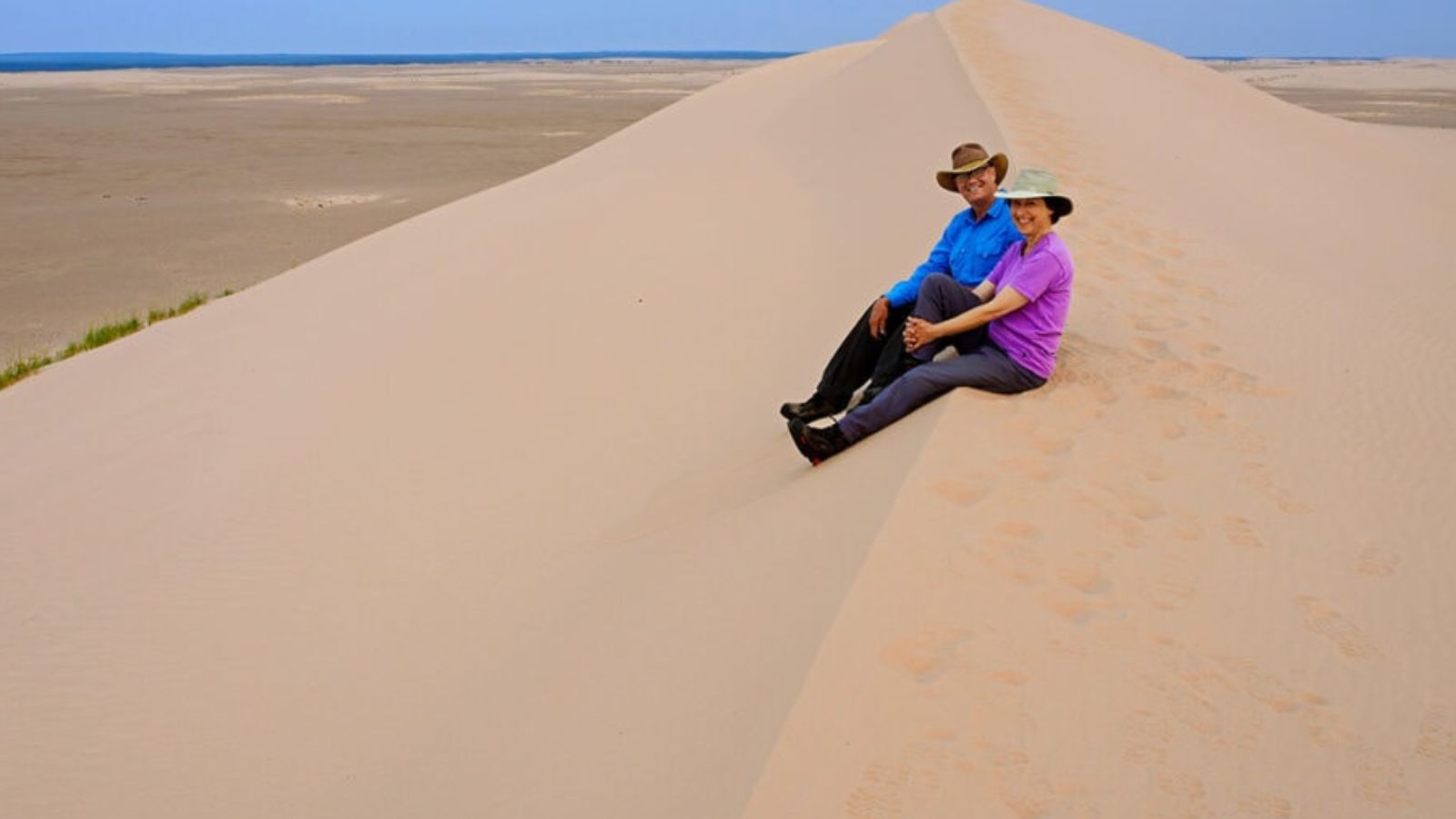
Sand dunes rarely come to mind when people think of Saskatchewan. Yet in the province’s northern area, the Athabasca Sand Dunes form the most northerly active sand dune system in the world. These massive, undulating dunes are only reachable by floatplane.
Hiking these dunes feels like being dropped into the heart of the boreal forest while traversing a desert. A limited number of people make the effort to reach this wonder, but those who do are treated to a bizarre and beautiful collision of elements.
Bay of Fundy Sea Caves, New Brunswick
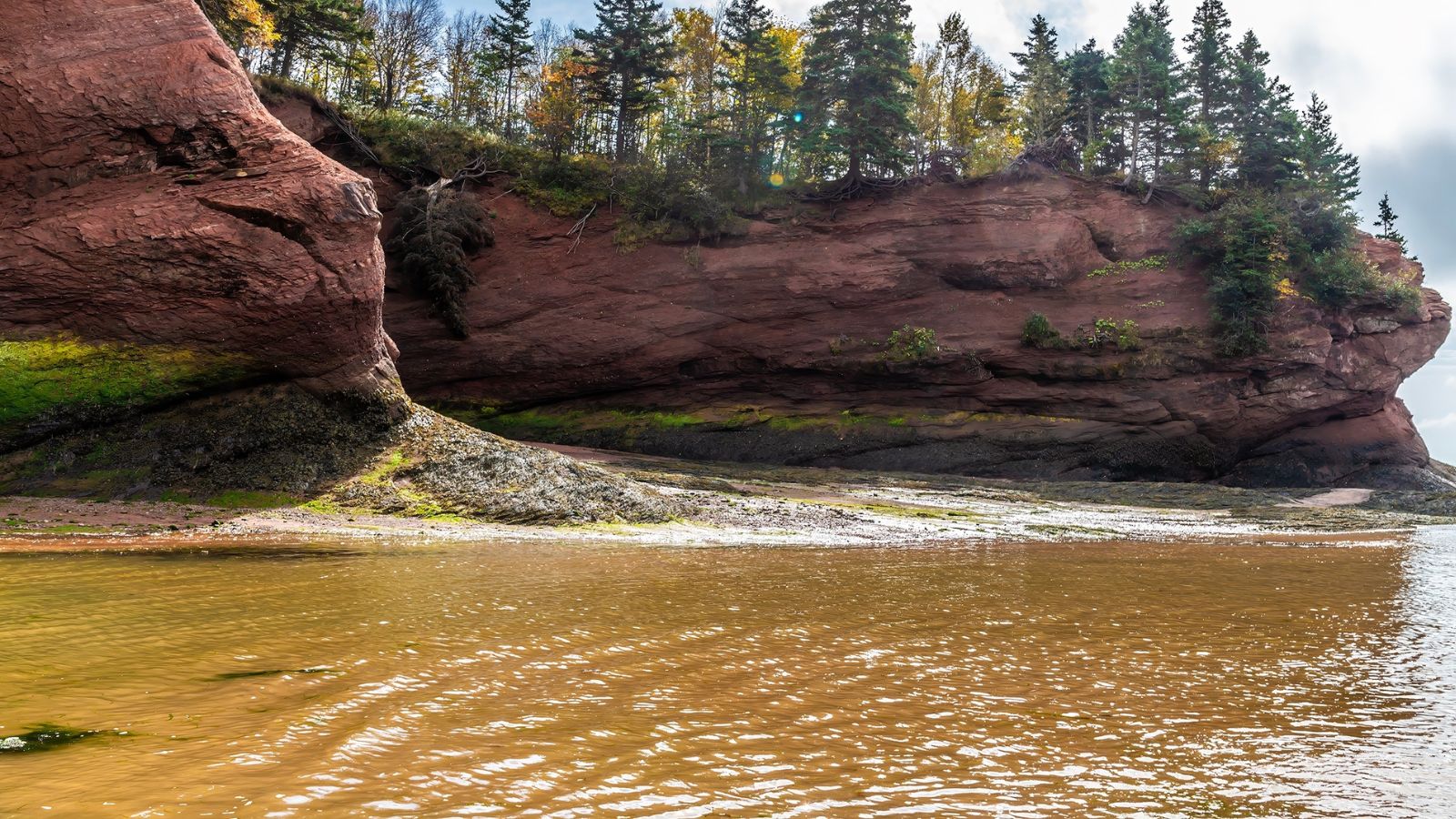
The Bay of Fundy is renowned for its world-record tides, but St. Martins’ lesser-known sea caves provide a more personal experience with this coastal phenomenon.
Low tides allow visitors to walk across the ocean floor and explore red sandstone caves carved from centuries of tidal force. The place is also a working fishing village, adding a cultural layer to the natural beauty. Although the Bay of Fundy region is overshadowed by Hopewell Rocks, which gets most of the attention, these quieter caves offer a closer, more personal interaction with the sea.
Torngat Mountains, Newfoundland and Labrador
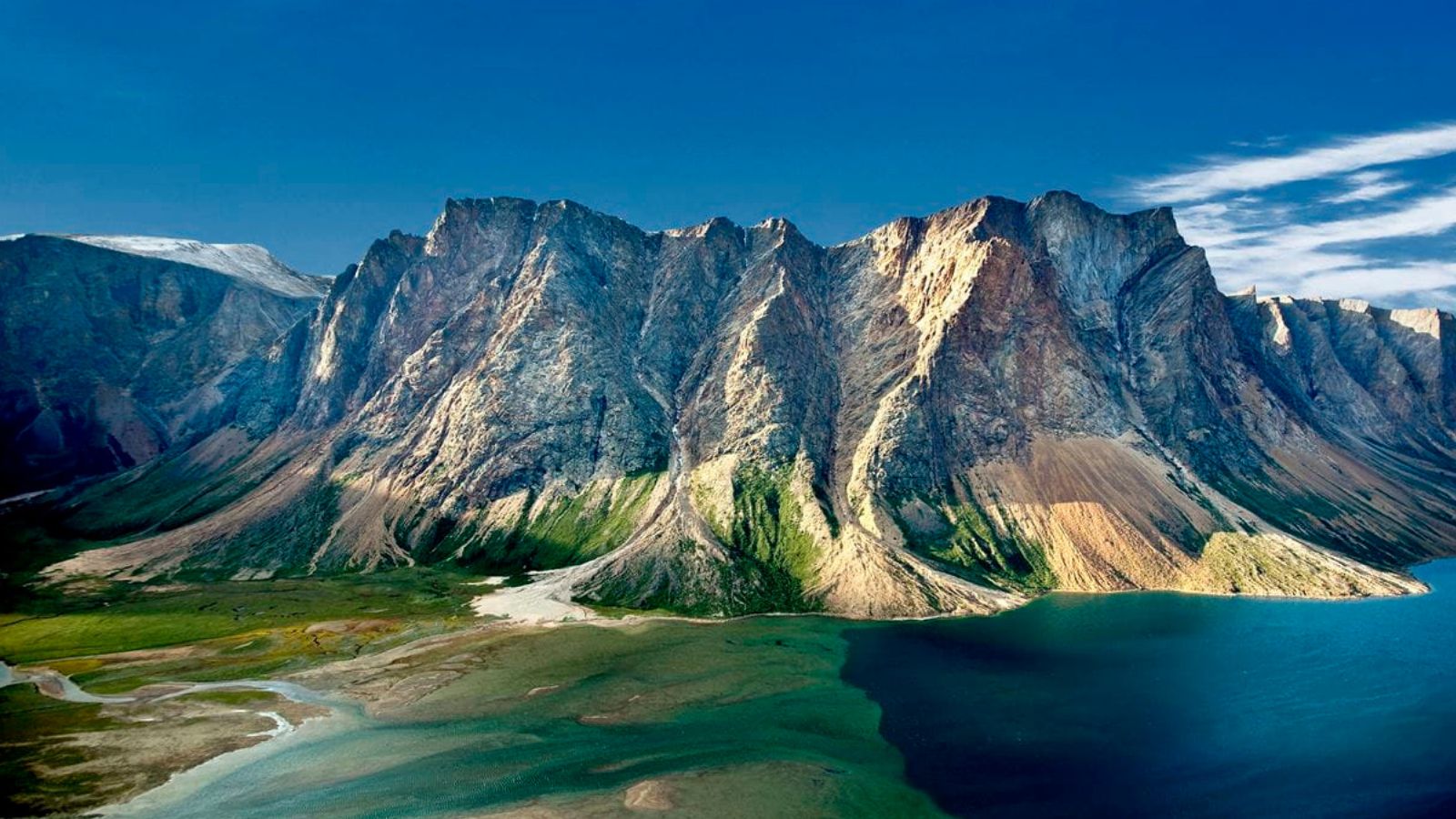
Remote and unforgiving, the Torngat Mountains rise dramatically from the Labrador Sea and are still one of Canada’s wildest and most isolated areas. The terrain includes fjords, tundra, and towering peaks, with no roads leading in or out. It can only be accessed by boat or charter plane, and visitors often travel with Inuit guides. Tourists who venture here describe it as more than just a sightseeing trip; according to them, it is more akin to a spiritual journey. In the Torngats, human presence is rare, and it is a place where nature is in complete control.
Crooked Bush, Saskatchewan
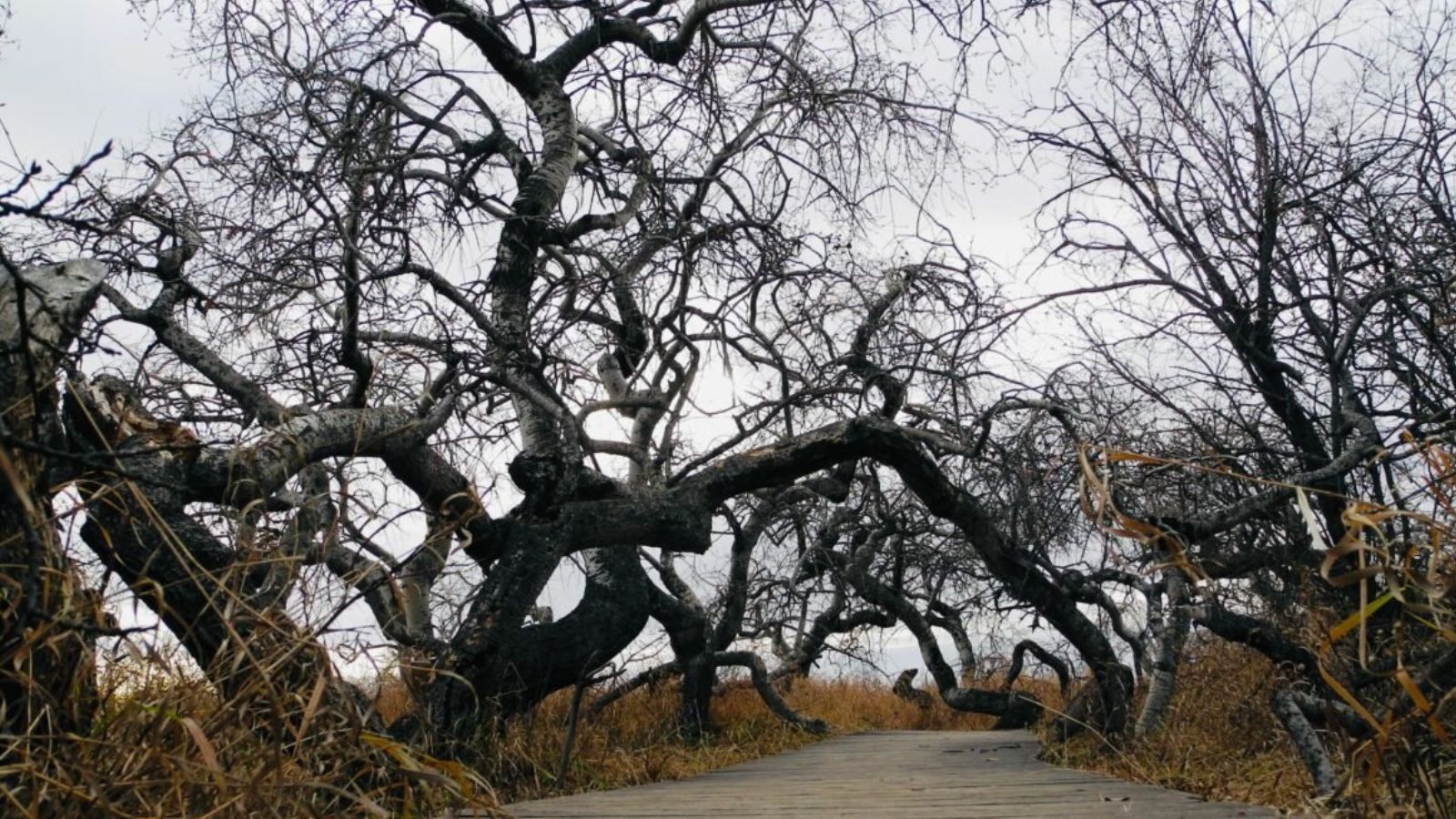
One of Canada’s most peculiar natural anomalies, the Crooked Bush, lies near the small community of Hafford. In this tiny grove, the trees grow in weird shapes that defy logic. The site has been studied by scientists, but no definitive explanation has been found for the odd growth patterns. This results in a fairytale-like setting that feels unique. The Crooked Bush is easily accessible, yet it is often overlooked in favor of more exciting destinations. It is more of a quiet place for reflection and curiosity within the prairie landscape.
Hopewell Cape at Night, New Brunswick

While the Hopewell Rocks are a major tourist attraction by day, their beauty under the moonlight is experienced by only a small percentage of visitors. When crowds depart and the tide starts to recede in the evening, the giant flowerpot rocks stand like ancient sentinels under a starry canopy. The moonlit shadows and the gentle ripple of the Bay of Fundy make the scene exquisite. Unfortunately, most tourists miss this version of Hopewell Cape, making it a secret hidden in plain sight.
Grotto Mountain Ice Caves, Alberta
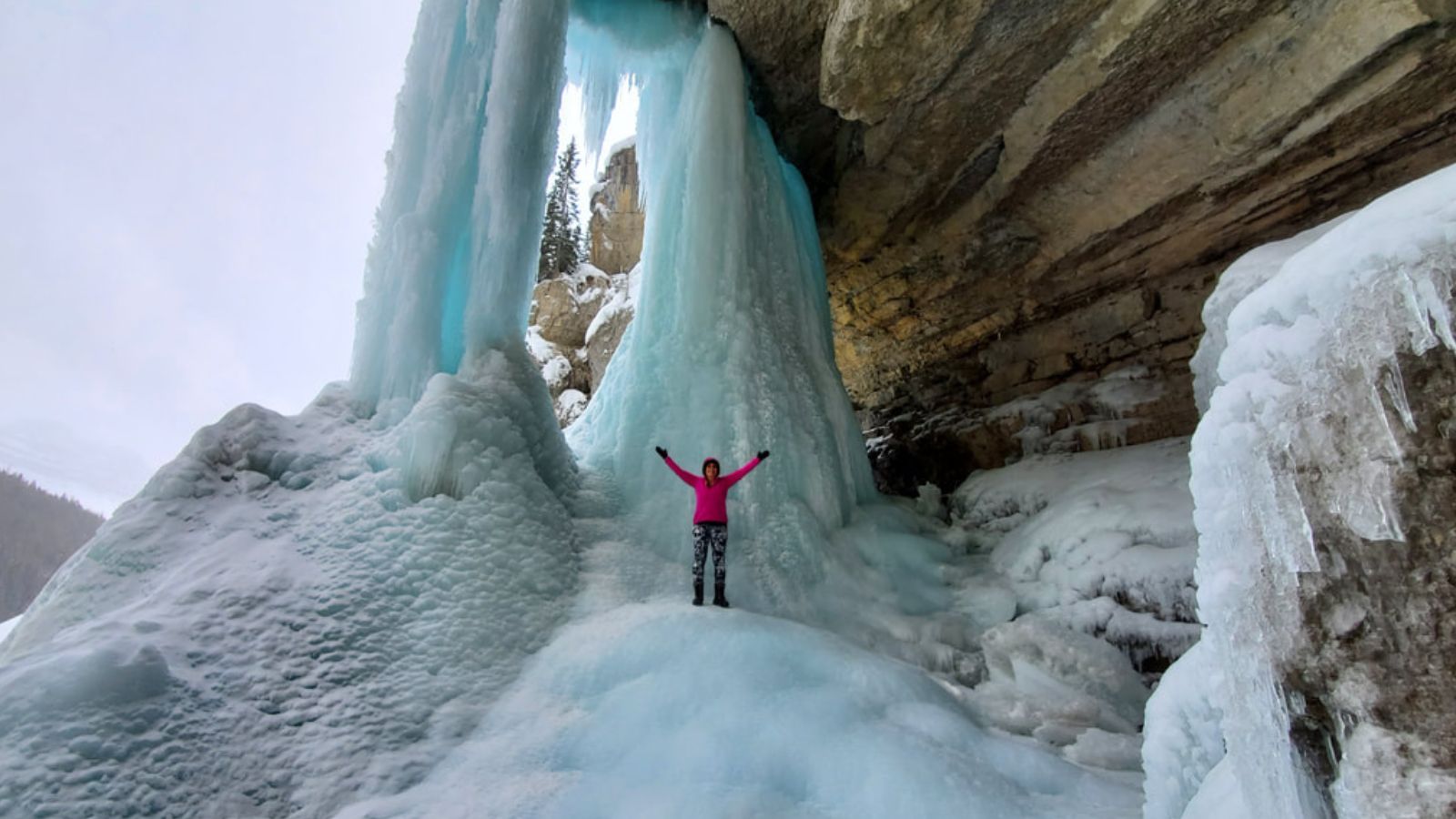
Tucked into the Bow Valley close to Canmore, Grotto Mountain is familiar to avid hikers, but few venture into its hidden ice caves. It can be reached through a strenuous hike and some scrambling, and upon arrival, the caves containing glimmering ice formations can be witnessed. Frost and crystal-like shapes sparkle on their interior walls. The surrounding views of the Rocky Mountains are equally stunning. This hidden site offers a raw, icy wonderland to those who are willing to explore off the beaten path.
Tumbler Ridge Geopark, British Columbia
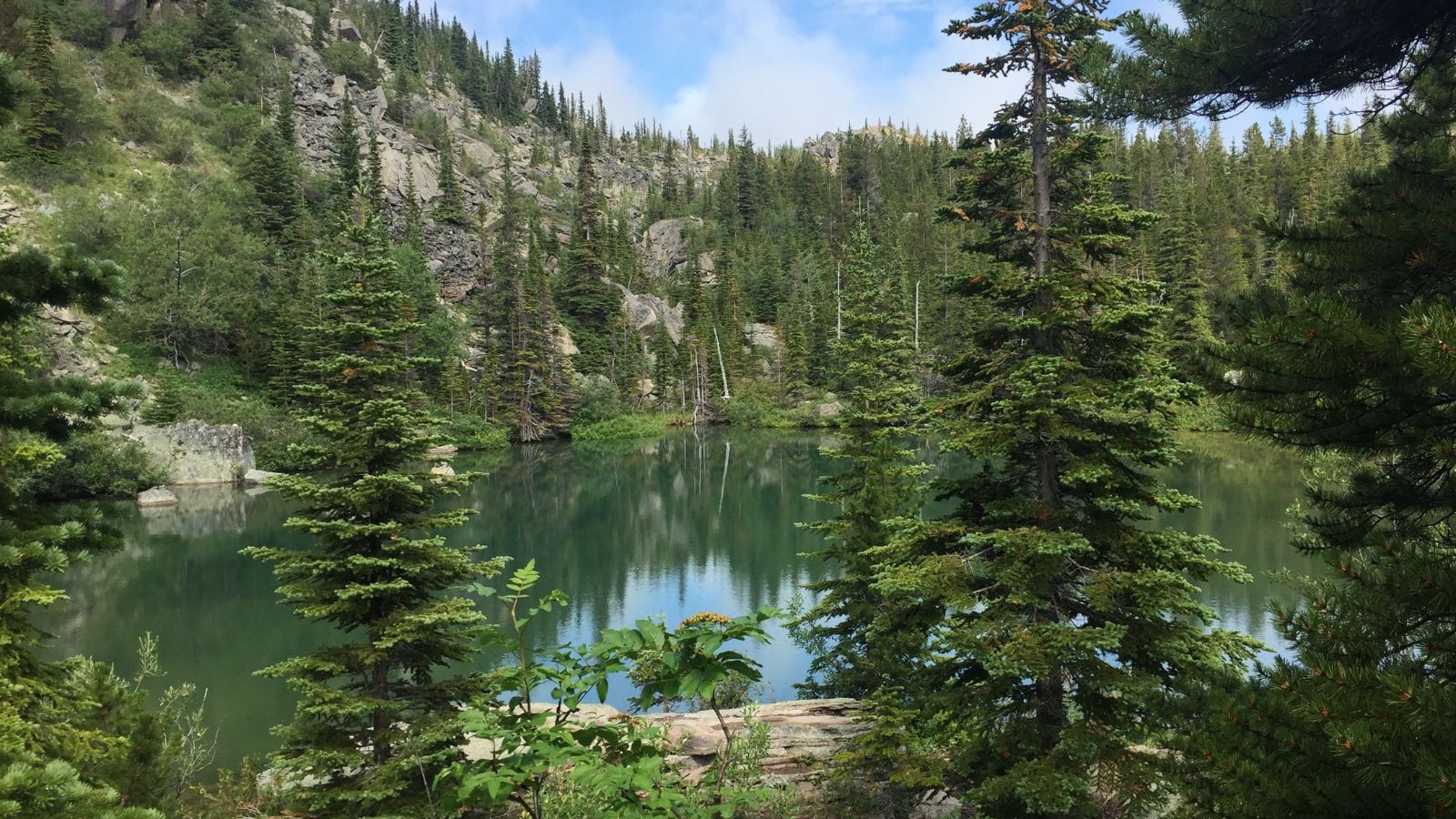
As a UNESCO Global Geopark, Tumbler Ridge is rich with dinosaur fossils, waterfalls, and wonderful mountain scenery, yet it is one of B.C.’s best-kept secrets. The area features over 50 mapped trails, including routes that lead to fossil beds, ancient tracks, and stunning falls like Kinuseo Falls, and being there helps visitors learn about paleontology through guided tours.
Tumbler Ridge’s world-class significance and geology have not helped boost the number of visitors, as they are a fraction of what other parks attract. However, it is still an ideal place for curious adventurers.
Iceberg Alley, Newfoundland
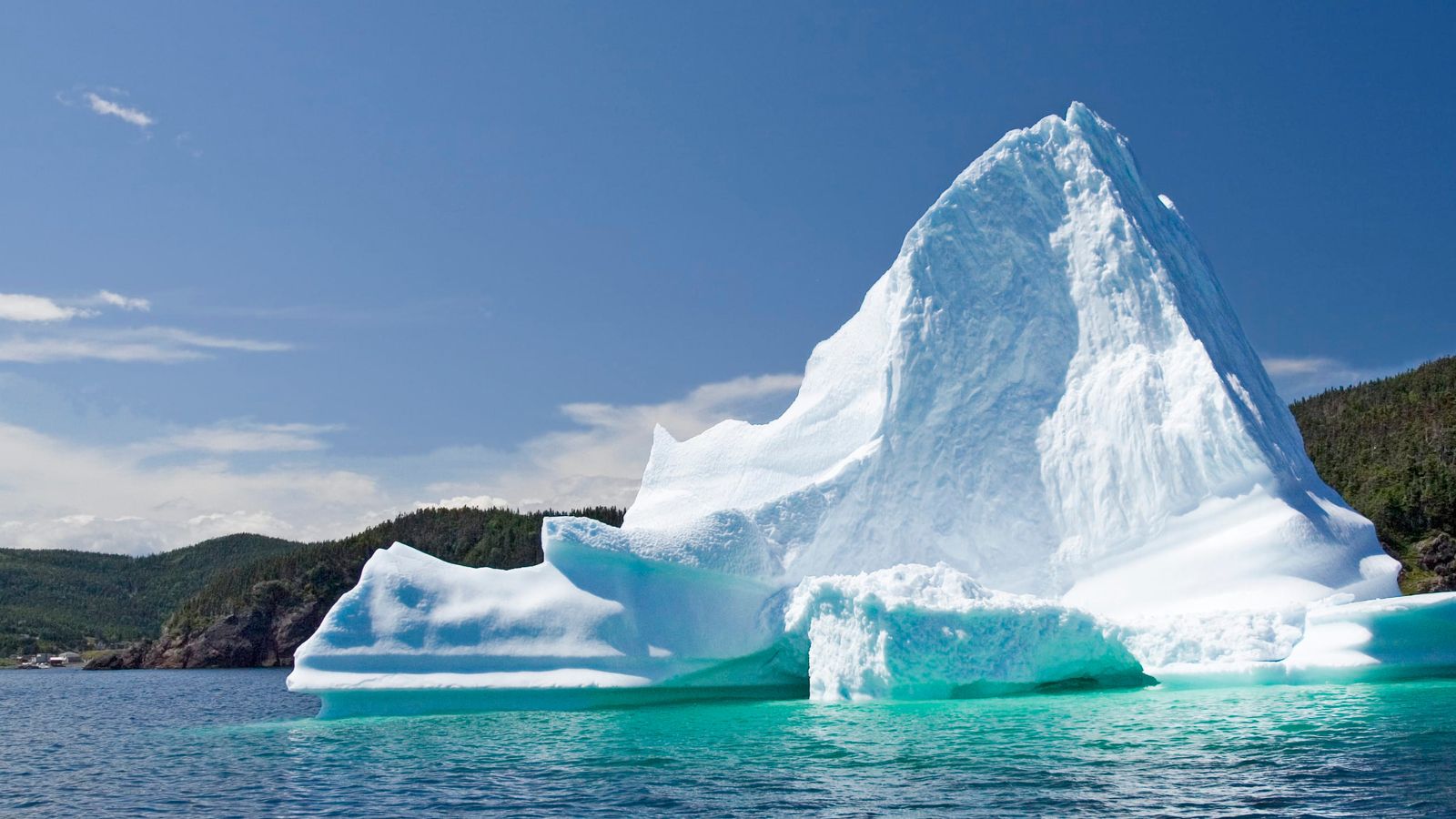
Every spring and early summer, Newfoundland’s east coast is a procession route for great icebergs migrating south from Greenland. Known as Iceberg Alley, this stretch of ocean from Labrador to the Avalon Peninsula is a natural theatre of floating white giants.
Boat tours are offered by towns like Twillingate and St. Anthony, but many bergs are visible from the shoreline. Seeing a massive, blue-tinged iceberg moving slowly through coastal fog is unforgettable. This is a rare performance by nature that is silent, majestic, and fleeting, but often goes unseen.
Marble Canyon, British Columbia
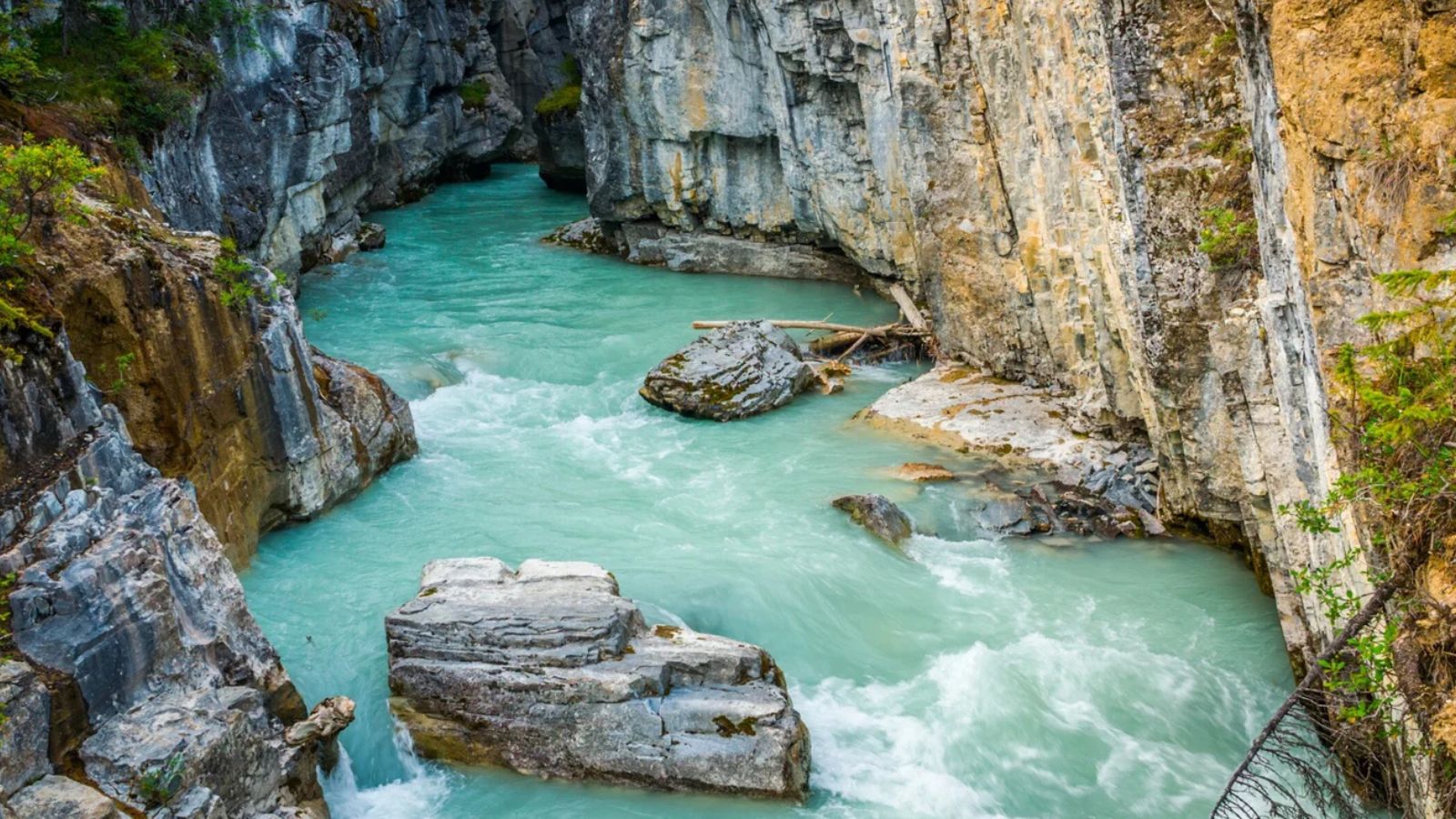
Not to be confused with its namesake in Alberta, Marble Canyon is a slot canyon that is carved by centuries of glacial meltwater present in B.C.’s Kootenay National Park. With its turquoise waters, slender limestone walls, and wooden bridges, the area feels both dramatic and peaceful. Marble Canyon differs from the other trails in the park in terms of foot traffic, especially in the shoulder seasons. The canyon’s colors and echoing waters create a sensory experience that lingers. Quietly nestled in the mountains, it’s a wonder waiting to be discovered.
Castle Provincial Park, Alberta
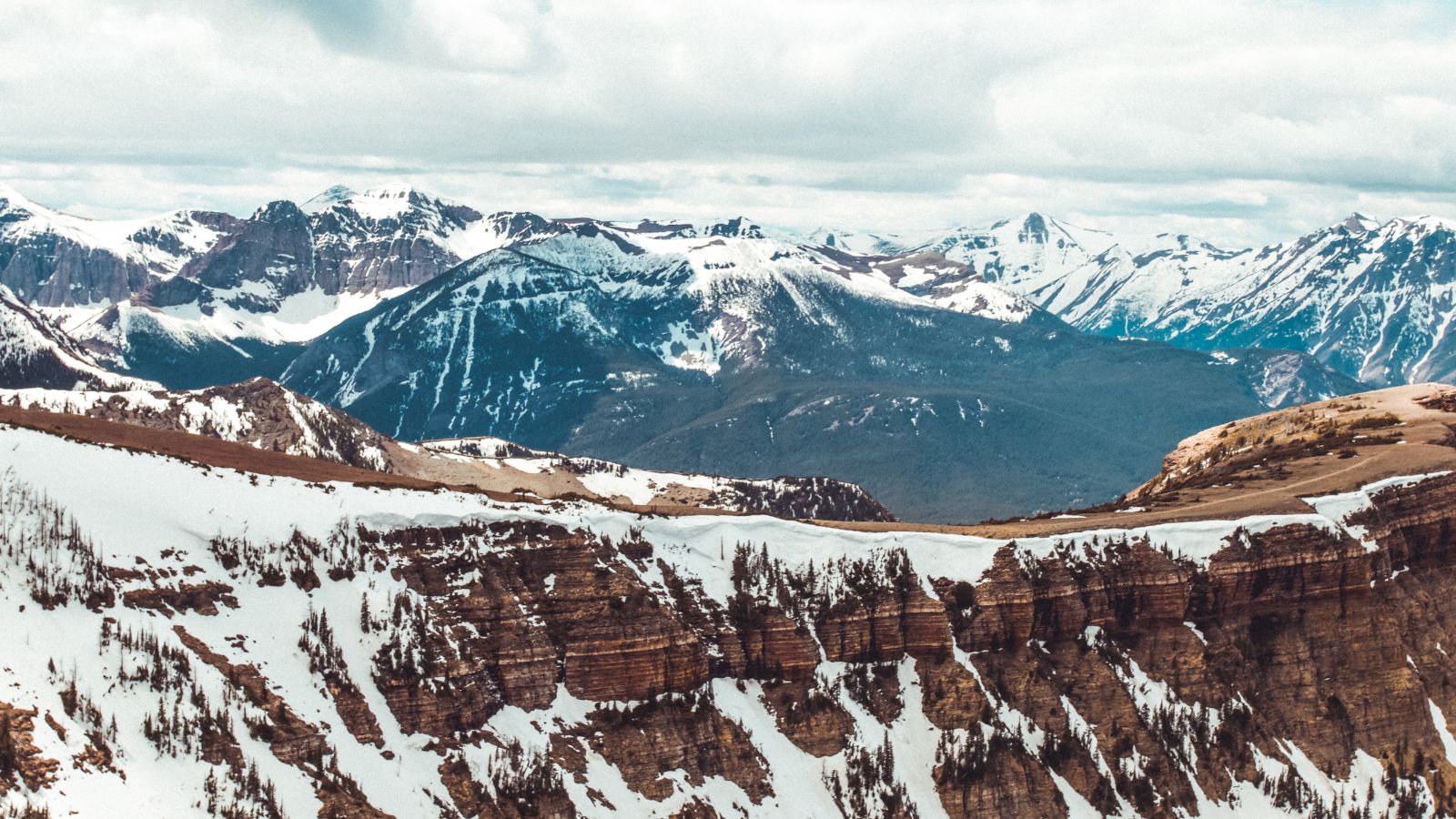
Located near the Alberta–Montana border, Castle Provincial Park was officially designated in 2017, which somewhat explains why it has stayed under the radar. The park contains alpine lakes, rugged peaks, and lush valleys that rival more famous parks, yet visitors prefer other locations. Its obscurity allows for a quieter, more immersive experience in nature. Those who have a solitary nature may find the rare mix of adventure and tranquility that the Castle offers appealing. It’s a relatively new name on the map but already a classic in the making.
French River Gorge, Ontario
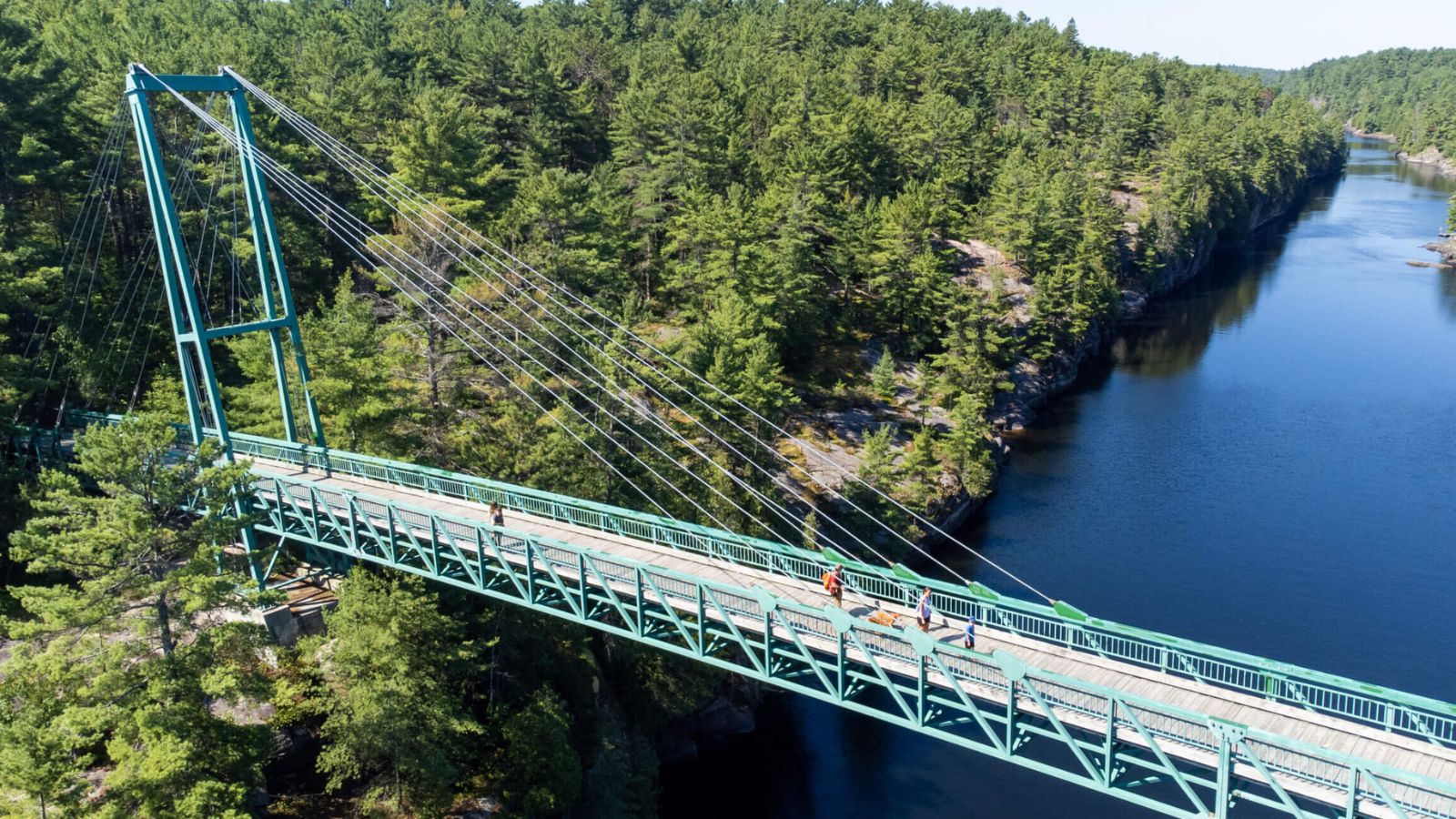
To the north of Georgian Bay is the historic French River, a crucial pathway for Indigenous peoples, fur traders, and voyageurs. While the river itself is not a secret, the gorge through which it flows is a lesser-known natural wonder. The area includes interpretive centers and hiking trails and is accessible through French River Provincial Park. Gorge has great historical and geological significance, but it is unable to attract an acceptable number of tourists. Its serene trails and cultural appeal provide a rich, peaceful escape into both nature and history.
Little Limestone Lake, Manitoba
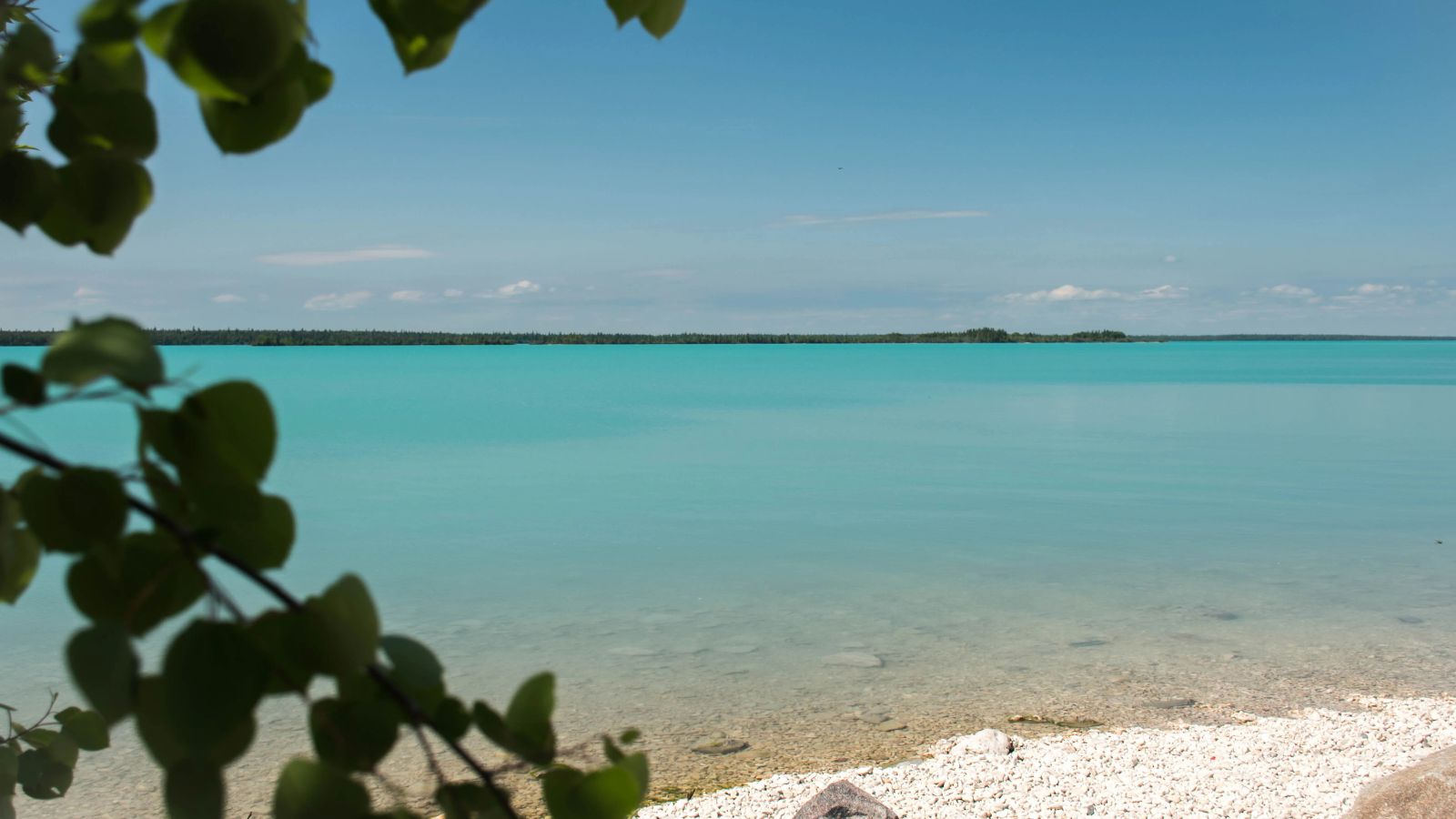
Just outside Grand Rapids, Little Limestone Lake shines with jewel-like hues and ranks among the largest marl lakes in the world. Its color shifts with sunlight and temperature, thanks to calcium carbonate deposits. Despite its striking beauty, the lake remains largely unknown to outsiders. There are no developed tourist facilities—only pure, crystalline waters surrounded by boreal forest.
Community efforts are underway to carefully balance tourism and preservation, as the lake sits within Indigenous territory. For those seeking rare, untouched natural beauty, Little Limestone Lake offers a truly one-of-a-kind spectacle.
The Dunes of Sandbanks River, Yukon
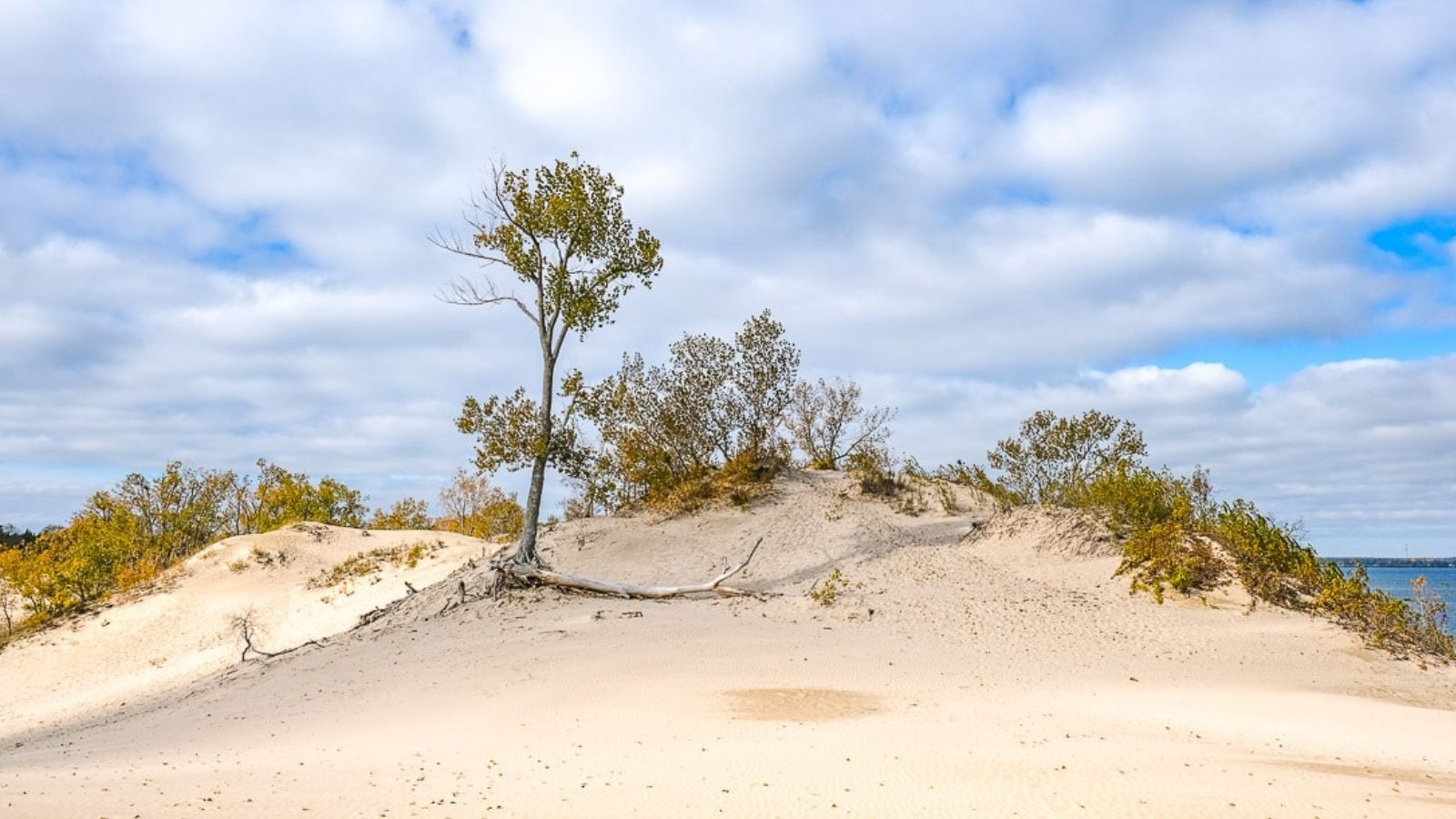
Few people think of the Yukon when they imagine sand dunes, but the rarely visited Sandbanks River area near Old Crow features wind-shaped dunes in an otherwise subarctic landscape. These dunes serve as remnants of ancient glacial activity and are almost entirely untouched by modern development.
Visitors need guidance from locals, or they have to arrive by challenging routes. But the reward is an ethereal and little-documented piece of Canada. The contrast between sand and snow, forest and sky, creates an unforgettable and almost mystical environment.
Wapta Icefield, Alberta–British Columbia Border
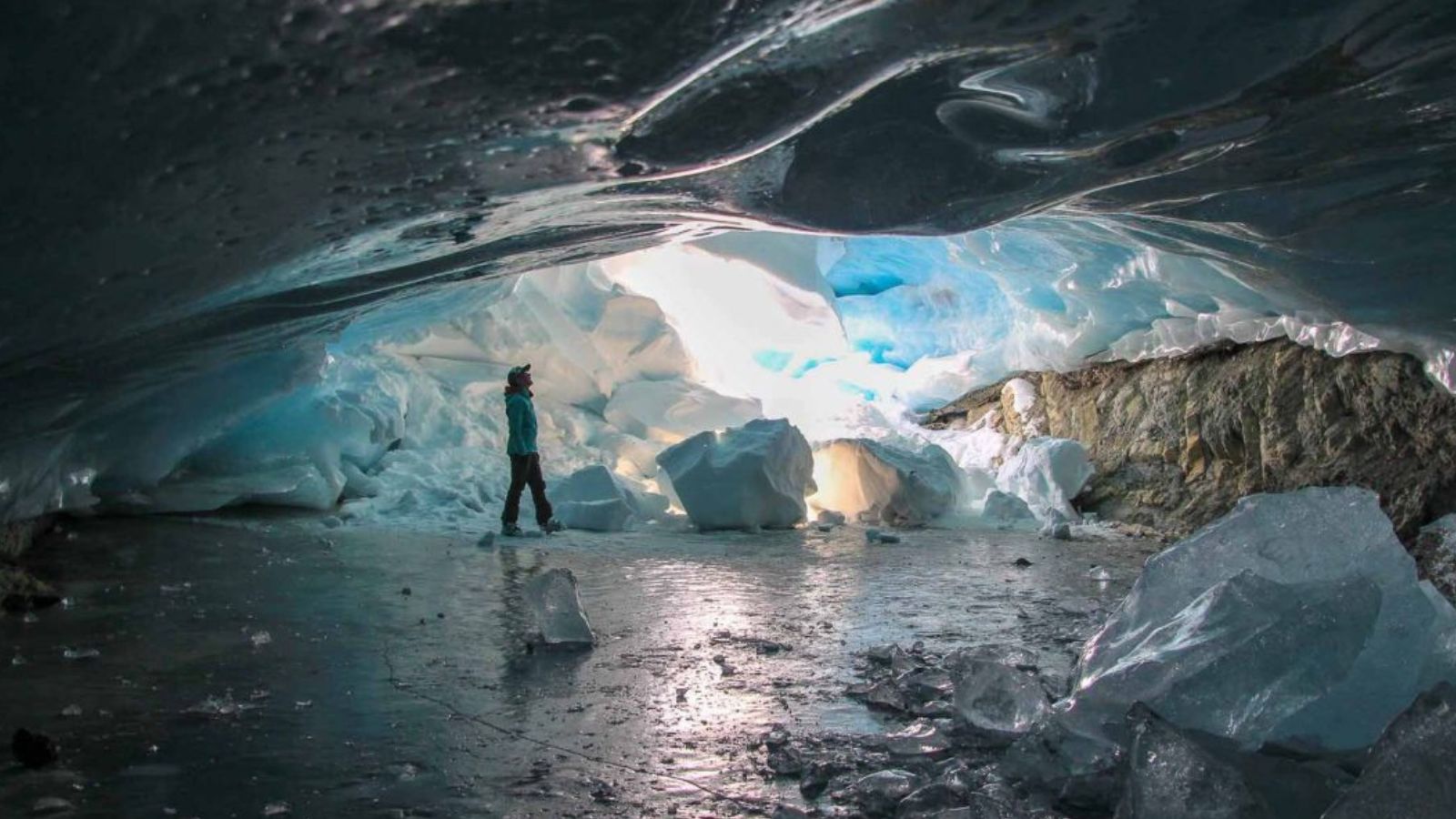
Spanning the Continental Divide, the Wapta Icefield is a vast network of interconnected glaciers that supply some of Canada’s most famous rivers. It puts off the average visitor from ever visiting, as it is only accessible through guided mountaineering trips or backcountry treks.
Yet its scale and beauty are astonishing, with views stretching across the Rockies and the sensation of walking on ancient ice, the experience is unmatched. For those who seek to explore the raw heart of the mountains, this icefield offers a chillingly majestic reward.
East Arm of Great Slave Lake, Northwest Territories
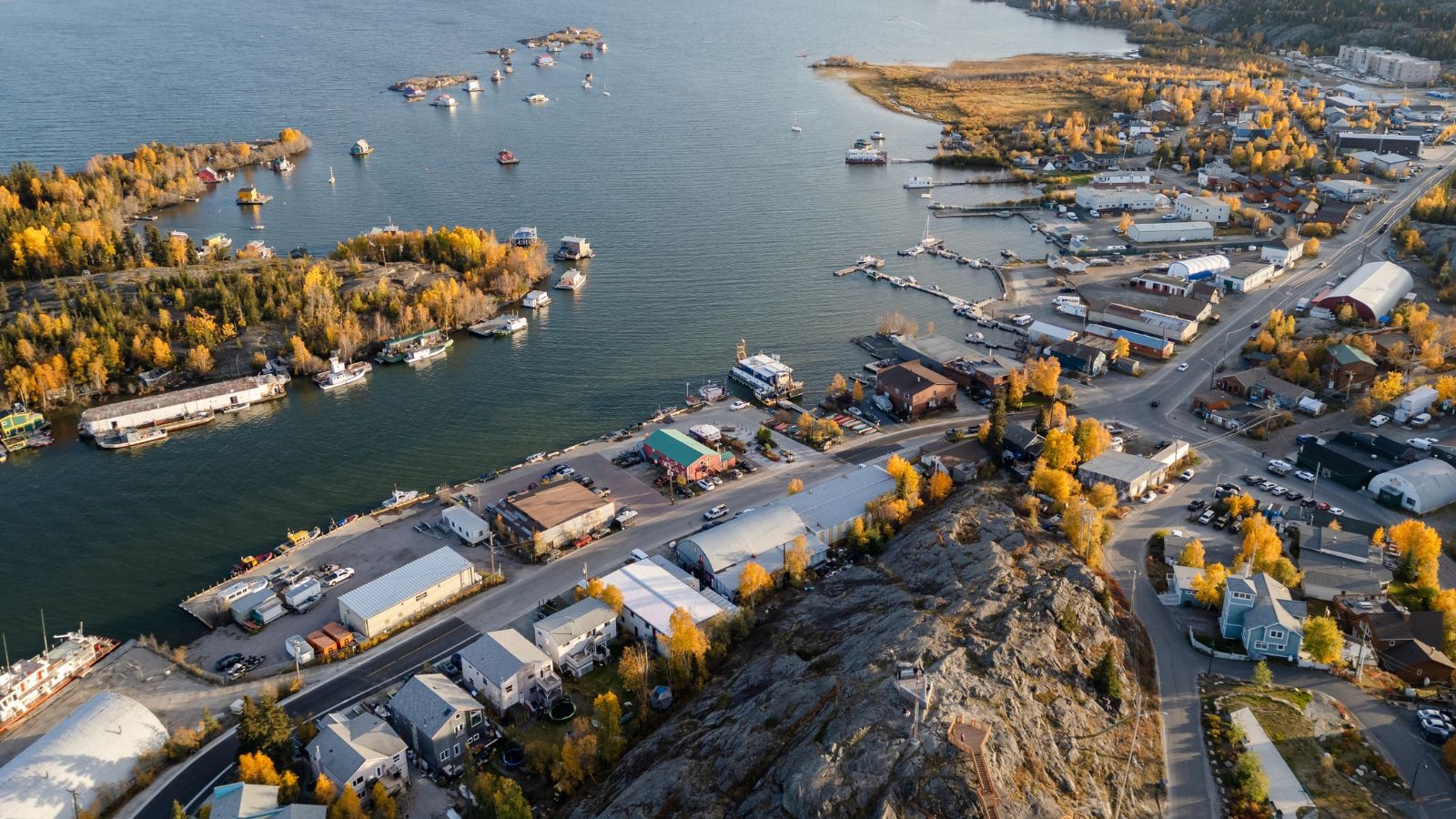
The East Arm of Great Slave Lake stretches into the Canadian Shield like a forgotten fjord, lined with towering cliffs, scattered islands, and water so clear it reflects the sky. Due to its immense cultural and ecological value, this part of the lake has been proposed as a national park.
Accessible only by boat or seaplane from Yellowknife, the East Arm reveals dramatic granite cliffs and hidden coves, perfect for fishing, paddling, and quiet exploration. Those fortunate enough to visit experience a profound sense of freedom and a deep connection to the untouched land.
Conclusion

While most people visit Canada’s popular attractions, there’s a quieter side of the country that often goes unnoticed. These 21 natural wonders, missed by many tourists, show us that real beauty isn’t always in big crowds or famous spots. Instead, it’s found in quiet forests, peaceful valleys, and strange rock formations, waiting for those who want to explore.
Visiting these places helps us appreciate Canada’s large and varied landscape. In a time when travel is often crowded and planned, these hidden wonders offer something more real and authentic.
25 Countries Predicted to Become Economic Superpowers in the Next 20 Years

The strength of an economy plays a crucial role in various international policies about trade and relations. Certain factors determine the strength of an economy, including population growth, availability of resources, and development and advancement. Here are 25 countries predicted to become economic superpowers in the next 20 years
25 Countries Predicted to Become Economic Superpowers in the Next 20 Years
